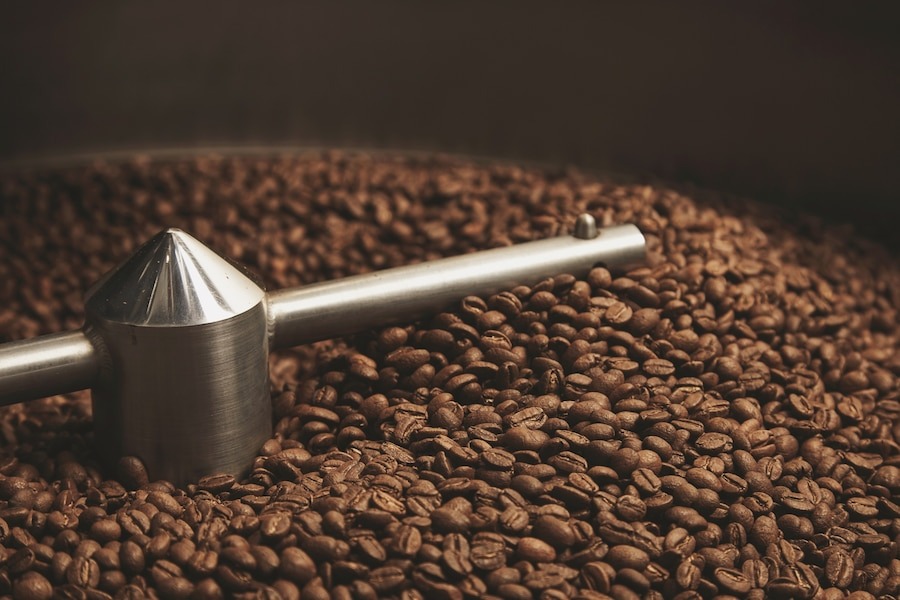Introduction
Coffee lovers around the world can agree that a good cup of coffee starts with freshly ground beans. The process of coffee grinding plays a crucial role in extracting the flavors and aromas that make each cup a delightful experience. In this comprehensive guide, we will delve into the world of coffee grinding and explore everything you need to know to elevate your coffee game.

Understanding the Basics
The Importance of Coffee Grinding
Coffee grinding is a fundamental step in the coffee brewing process. When coffee beans are ground, their surface area increases, allowing water to extract the desired flavors and oils more efficiently. The grind size directly impacts the extraction process, influencing the taste, strength, and consistency of your brewed coffee.
Factors Affecting Coffee Grinding
Several factors come into play when determining the ideal grind size for your coffee. These include the brewing method, coffee bean freshness, and personal preference. By understanding these factors, you can fine-tune your grinding technique to achieve the perfect cup of coffee every time.
Exploring Different Grind Sizes
Coarse Grind
A coarse grind is characterized by large particles, similar to kosher salt. This grind size is commonly used for brewing methods such as French press and cold brew. The larger particles allow for a slower extraction, resulting in a rich and full-bodied coffee.
Medium Grind
A medium grind falls between the coarse and fine grind sizes, resembling granulated sugar. This versatile grind works well with various brewing methods, including pour-over, drip coffee makers, and AeroPress. It strikes a balance between extraction and flavor clarity.
Fine Grind
A fine grind consists of smaller particles, comparable to table salt or sand. This grind size is commonly used for espresso machines and Moka pots. The fine particles ensure a quick and thorough extraction, producing a concentrated and intense cup of coffee.
The Grinding Process
Manual Coffee Grinders
Manual coffee grinders offer a hands-on approach to grinding your coffee beans. These devices are typically compact, portable, and don’t require electricity. They often feature adjustable settings to control the grind size, allowing you to customize your coffee according to your preference. Popular manual grinders include the Hario Skerton and the Porlex Mini.
Electric Burr Grinders
Electric burr grinders are the go-to choice for many coffee enthusiasts due to their convenience and consistent grind quality. These grinders utilize burrs to crush the coffee beans, resulting in a uniform grind size. They often offer a range of grind settings, allowing you to experiment with different brewing methods. Some popular electric burr grinders include the Baratza Encore and the Breville Smart Grinder Pro.
Blade Grinders
Blade grinders, while commonly found in many households, are not recommended for achieving a consistent grind size. These grinders use spinning blades to chop the beans, leading to an uneven grind. However, if you only have access to a blade grinder, you can improve the results by pulsing the grinder and shaking it gently to ensure a more uniform grind.
Maintaining Coffee Freshness
Whole Bean vs. Pre-Ground Coffee
When it comes to freshness, whole bean coffee always takes the lead. Whole beans retain their flavor and aroma for a longer period compared to pre-ground coffee. Pre-ground coffee, on the other hand, is exposed to oxygen, moisture, and light, which can cause it to stale quickly. To experience the full potential of your coffee, invest in whole bean coffee and grind it just before brewing.
Proper Storage Techniques
To prolong the freshness of your coffee beans, it’s essential to store them correctly. Coffee is sensitive to air, light, moisture, and heat, which can accelerate the degradation process. Opt for an airtight container made of ceramic or glass to protect your beans from external factors. Additionally, store the container in a cool, dark place, away from direct sunlight and moisture.
Exploring Coffee Roasting
Coffee roasting is an integral part of the coffee production process. Once the coffee beans are harvested, they undergo a transformation through the application of heat. Roasting brings out the unique flavors and aromas locked within the beans, creating the distinct profiles we associate with different coffee varieties. To learn more about the art of coffee roasting and the various roasting techniques, you can check out our comprehensive guide on coffee roasting that dives into the intricacies of this fascinating process.
Frequently Asked Questions (FAQs)
1. Can I use any type of coffee grinder for espresso?
Espresso requires a fine grind to ensure optimal extraction. While any coffee grinder can technically grind beans for espresso, it’s best to invest in a grinder specifically designed for espresso. Electric burr grinders with precise grind settings are recommended to achieve consistent results.
2. How long should I grind my coffee beans?
The grinding time can vary depending on the brewing method and the desired grind size. As a general rule, aim for a consistent grind size and adjust the grinding time accordingly. It’s recommended to experiment and taste the resulting coffee to determine the ideal grinding time for your preferences.
3. Can I grind flavored coffee beans?
Grinding flavored coffee beans in your grinder can leave residue and affect the taste of future brews. It’s best to avoid grinding flavored beans unless you have a separate grinder dedicated solely to flavored coffee.
4. What’s the difference between blade grinders and burr grinders?
Blade grinders use spinning blades to chop the coffee beans, resulting in an inconsistent grind size. Burr grinders, on the other hand, crush the beans between two burrs, creating a uniform grind size. Burr grinders offer better control and consistency, making them the preferred choice for coffee enthusiasts.
5. Can I grind coffee without a grinder?
If you find yourself without a coffee grinder, you can still enjoy a cup of coffee by utilizing alternative methods. One option is to use a mortar and pestle to crush the beans manually. Another method is to place the beans in a sealed plastic bag and crush them using a rolling pin or a heavy object. While these methods may not produce the same consistency as a grinder, they can still work in a pinch.
6. How often should I clean my coffee grinder?
Regular cleaning is crucial to maintain the performance and longevity of your coffee grinder. It’s recommended to clean the grinder at least once a month or more frequently if you use it daily. Consult the manufacturer’s instructions for specific cleaning guidelines for your grinder model.
Conclusion
Understanding the art of coffee grinding is an essential skill for any coffee enthusiast. By mastering the grind size, choosing the right brewing method, and using freshly ground beans, you can elevate your coffee experience to new heights. Remember to invest in a quality grinder, store your beans properly, and experiment with different grind sizes to discover your perfect cup of coffee. So, grab your favorite beans, fire up your grinder, and embark on a delightful coffee brewing journey.
